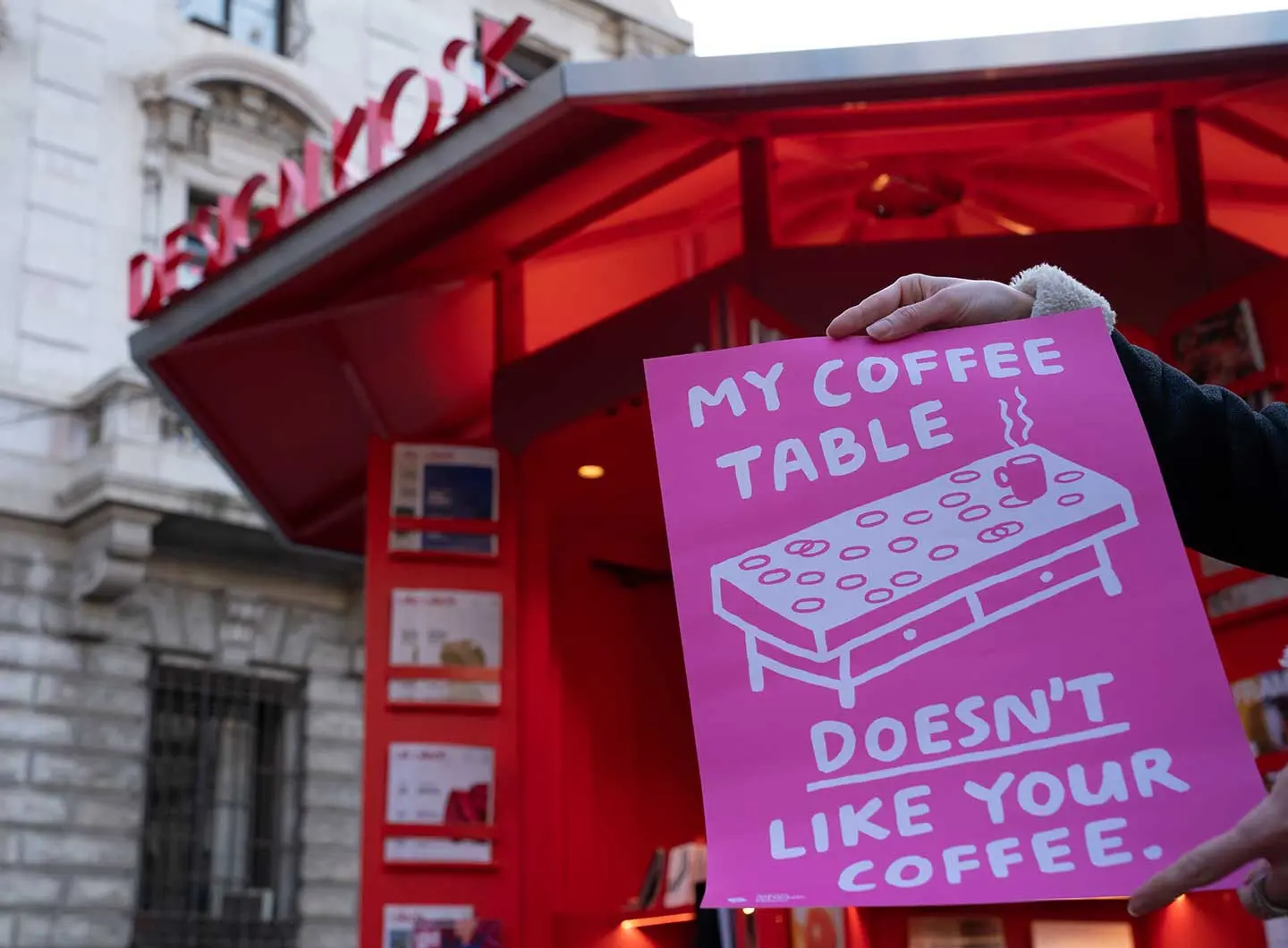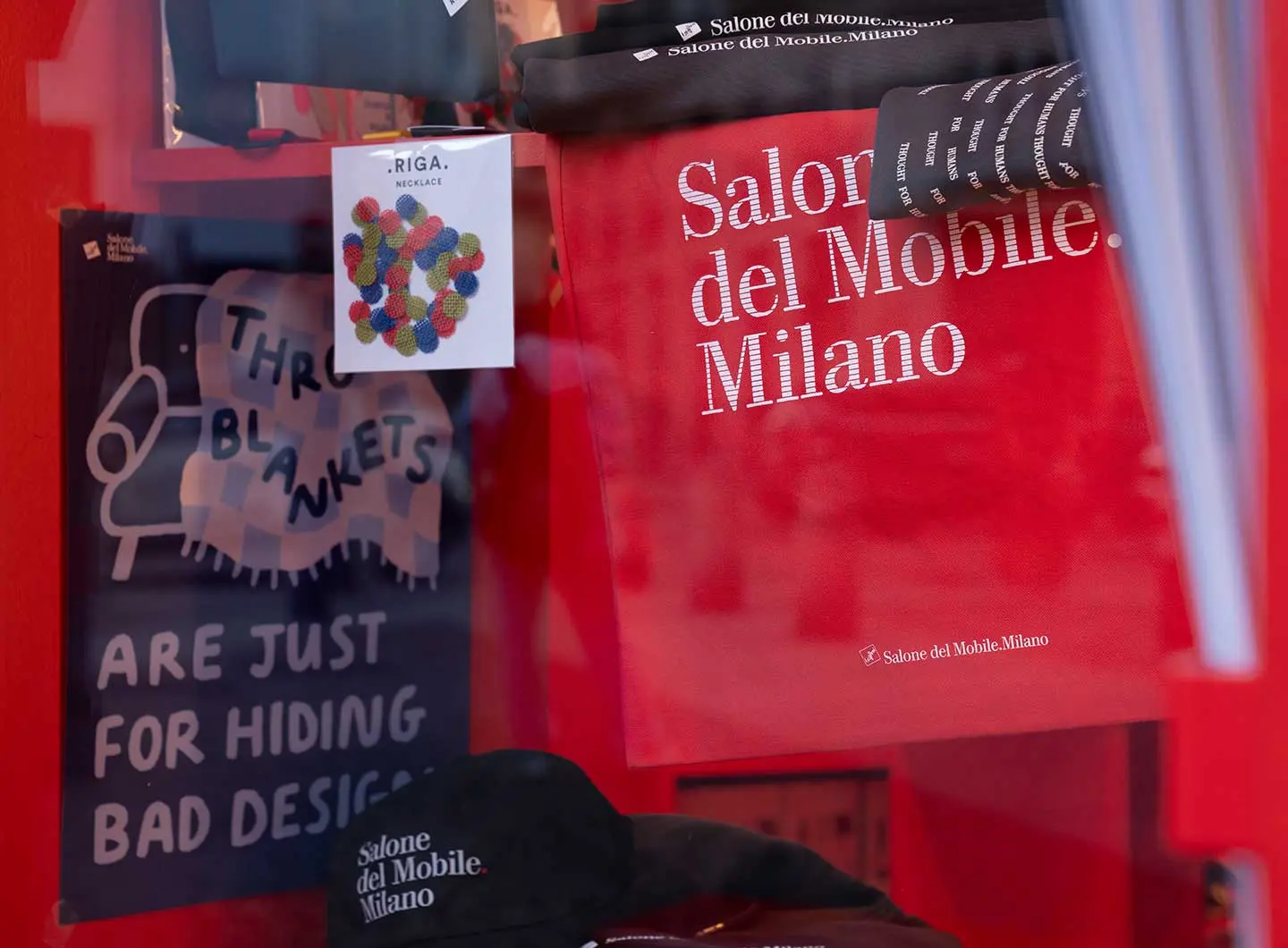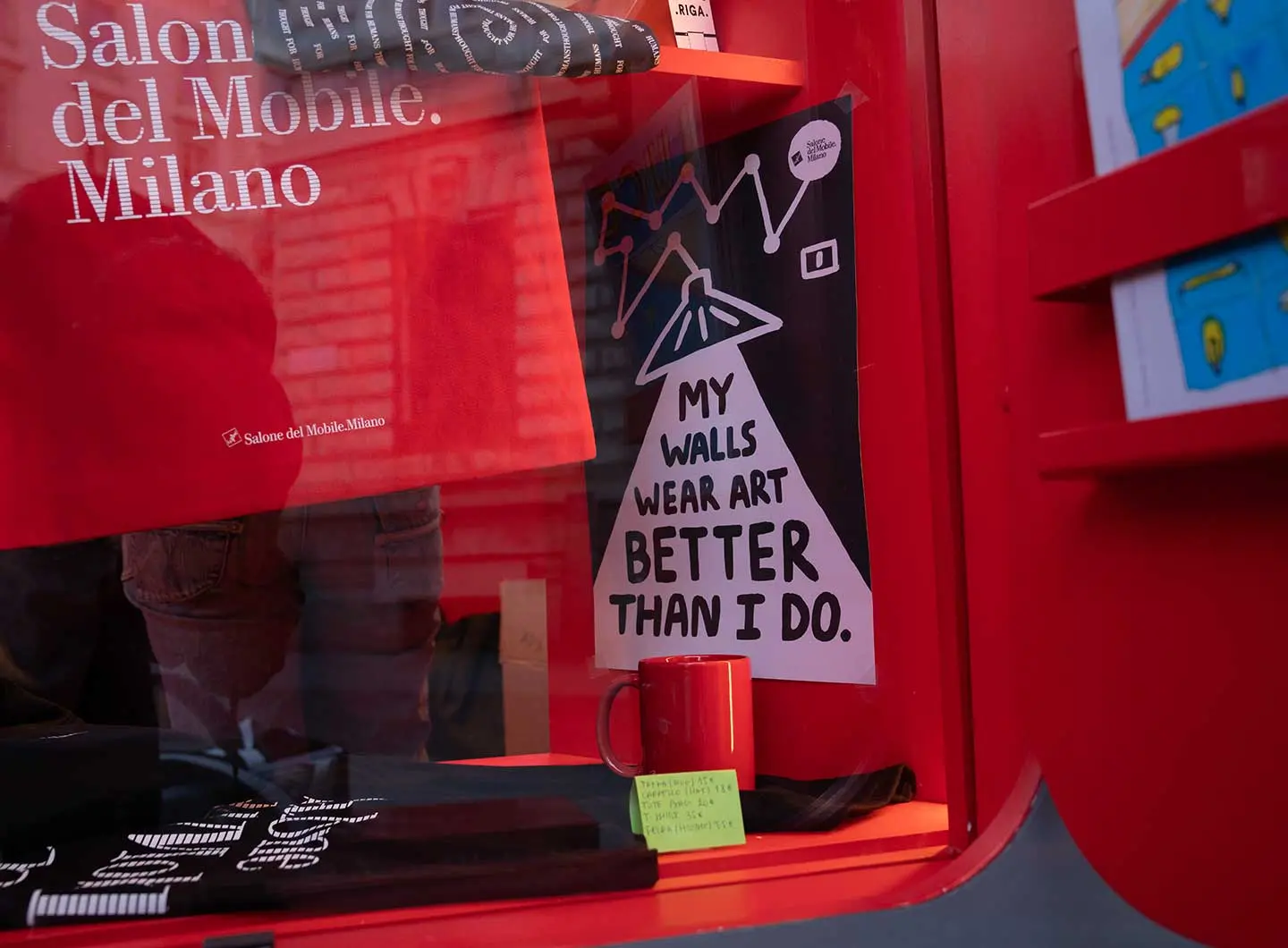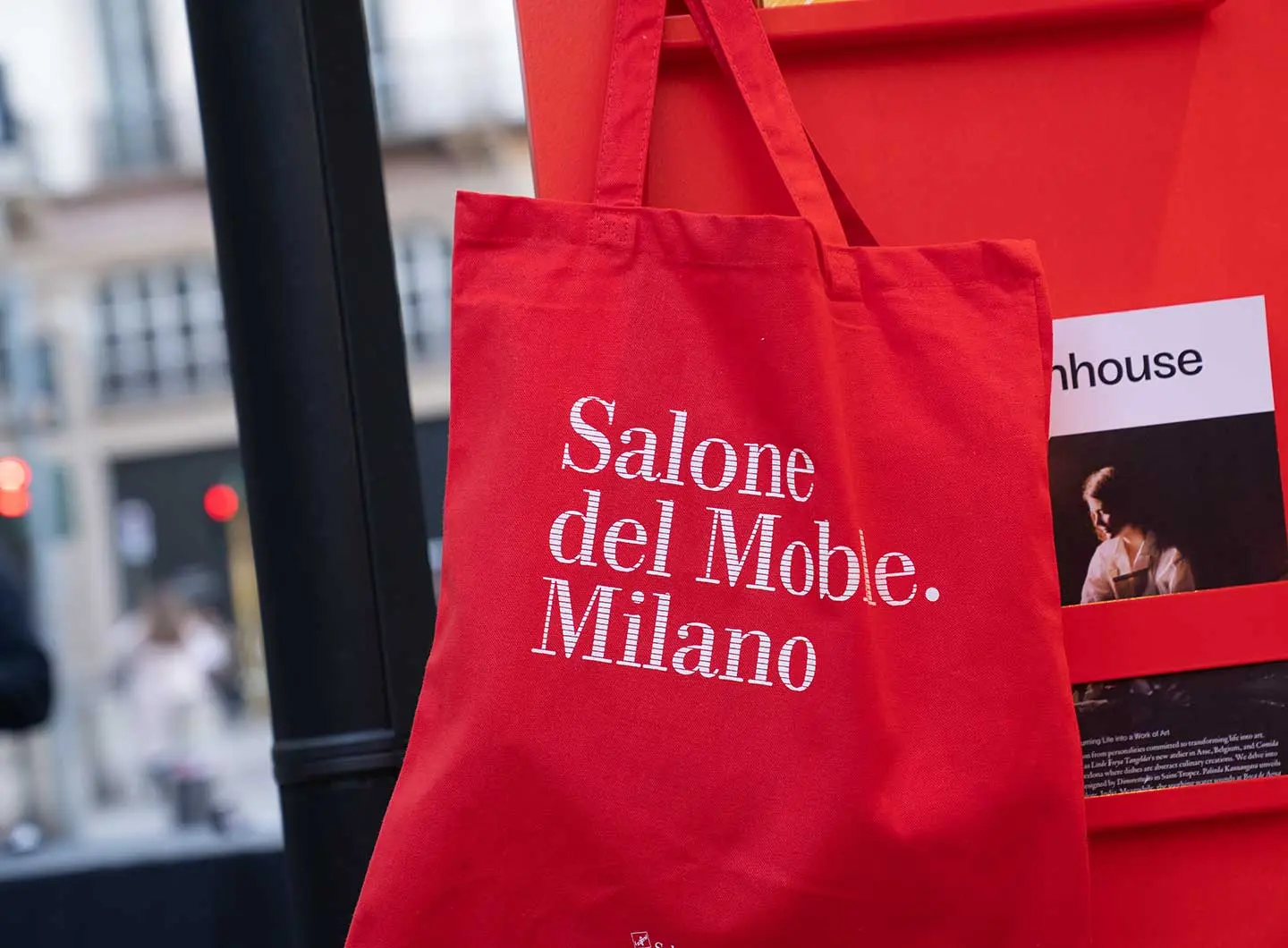After the “Drafting Futures” Arena conference space, the Salone Library, and the Corraini Bookshop, the Formafantasma creative duo – Andrea Trimarchi and Simone Farresin – has also designed the new “fair within a fair” setup dedicated to rare objects. Here’s their preview
Salone posters in collaboration with Eleonora Marton at the Design Kiosk
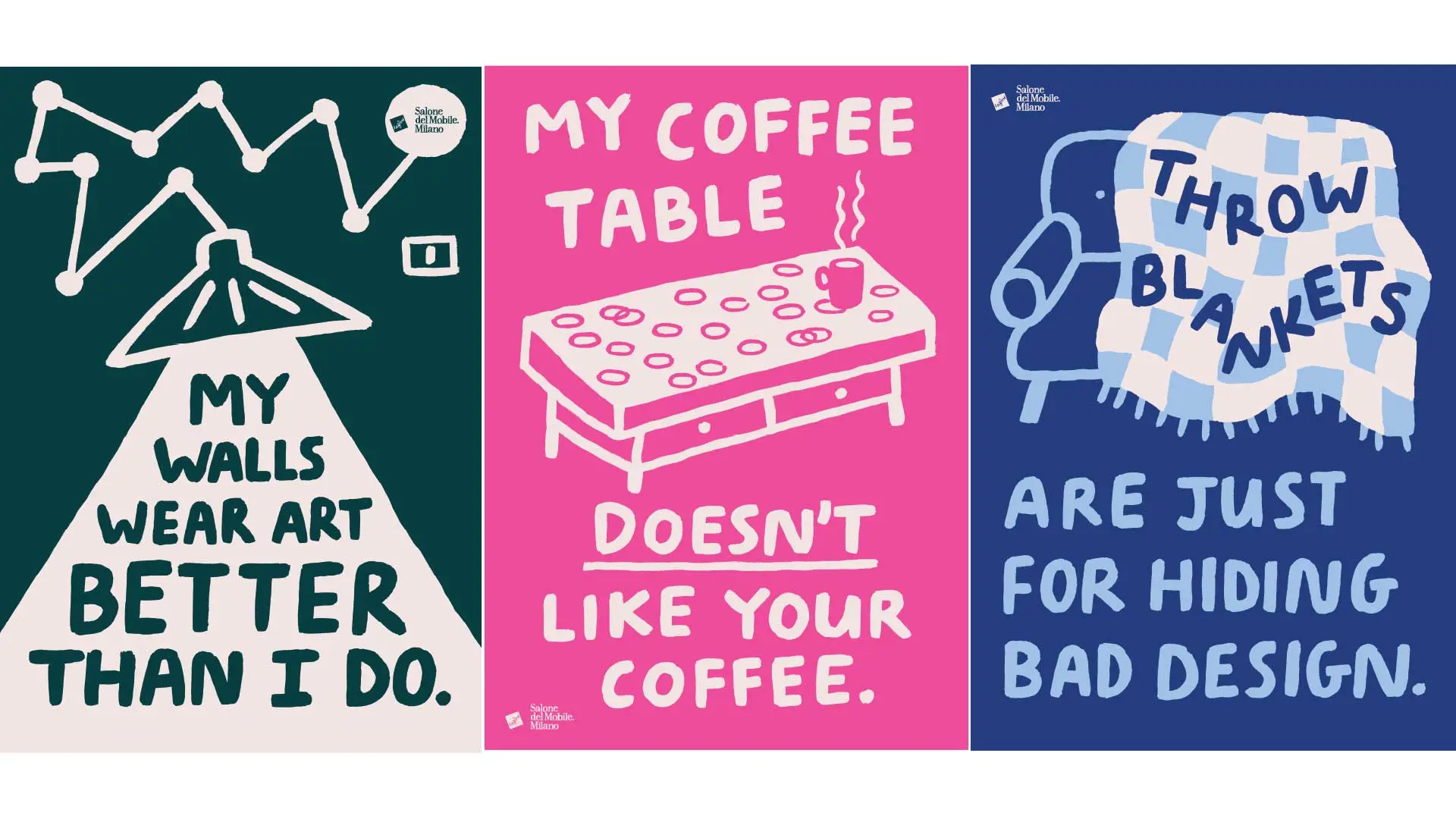
From 1 to 13 April, at the temporary space of the Salone del Mobile.Milano in Piazza della Scala, visitors can receive a poster created by the Italian illustrator, free of charge
Again this year Design Kiosk is back, the Salone del Mobile.Milano’s cultural landmark in the city, and from 1 to 13 April it will be hosting a rich panel of guests such as Piero Lissoni, Federica Biasi, Giulia Ricci and Alessandro Valenti, Aldo Cibic, Stephen Burks and Malika Leiper, Olimpia Zagnoli and Pietro Corraini, moderated by the journalist Serena Scarpello.
Design Kiosk is entrusted to Corraini Edizioni and designed by DWA-Design Studio: from 10 a.m. to 7 p.m., in Piazza della Scala, it will host a series of books, independent magazines and design objects. What’s more, for all aficionados of graphics and illustration it will be possible to receive, free of charge, a series of posters made by Eleonora Marton, the Italian illustrator based in London. A collection that celebrates the world of design made in a limited edition, all highly collectible.
During her career, Marton has contributed to magazines and institutions such as The New York Times, Interni Magazine, Bonnier Books UK, The Guardian, NIKE, Wired Italy, UCLA, Einaudi Ragazzi, Biancoenero edizioni, LINK magazine, Rizla, Kiblind Magazine, Cicada Books, Feltrinelli, MAXXI Museum, California Sunday Magazine, Junior Poetry Magazine.
The Salone official capsule collection will also be available at the Kiosk, including clothing and collectibles designed for those who want to take home a fragment of this community that comes together in Milan every April.
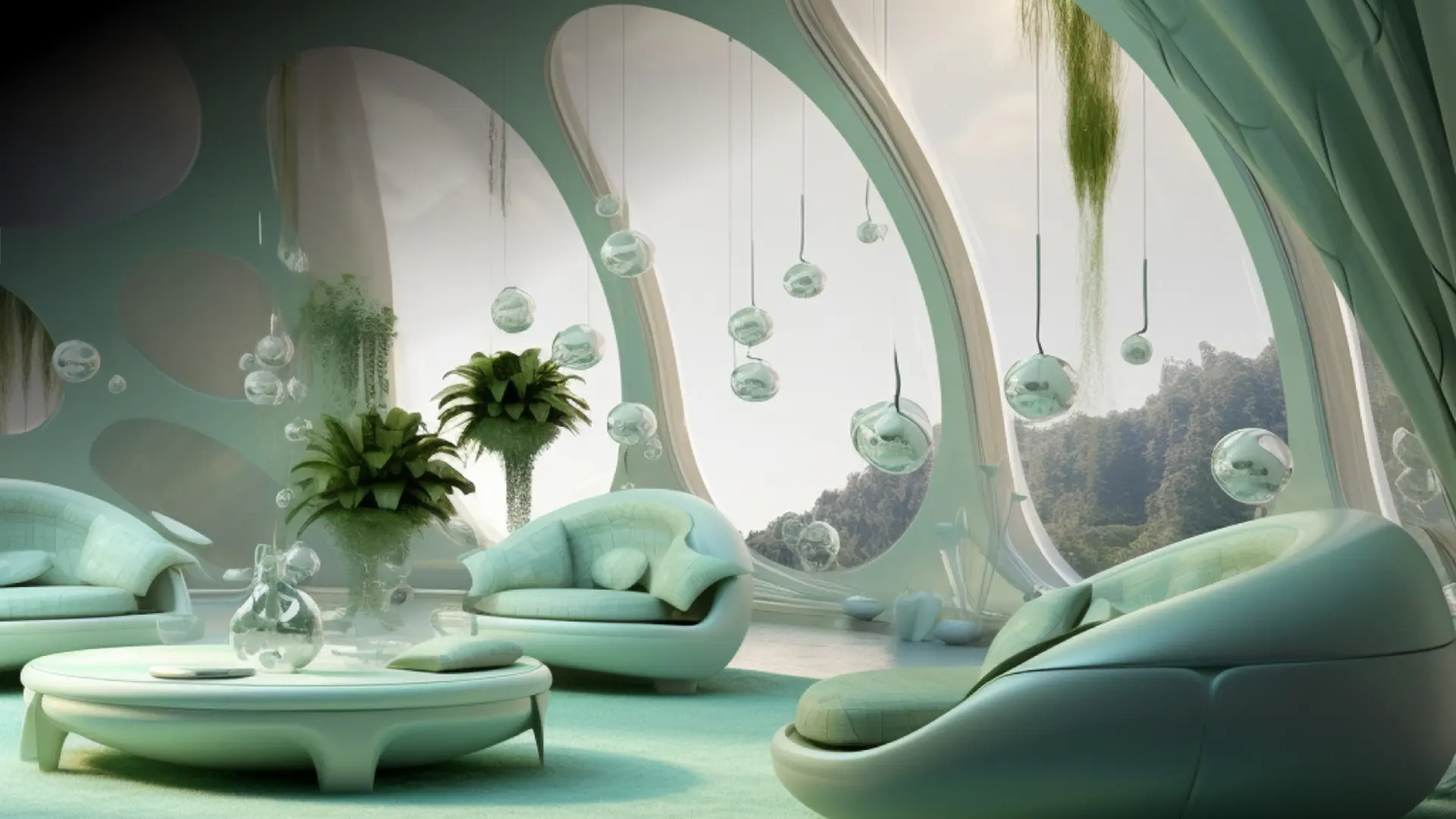
6 design competitions not to be missed in 2026
From the Tokyo Design Awards, to the NY Product Design Awards & Architectural Design Awards, Best in Design, the NEB Trophy Design Competition, the Good Design Awards® and the Africa International Design Awards (AIDA), all the international news not to be missed in 2026



 Exhibitions
Exhibitions
